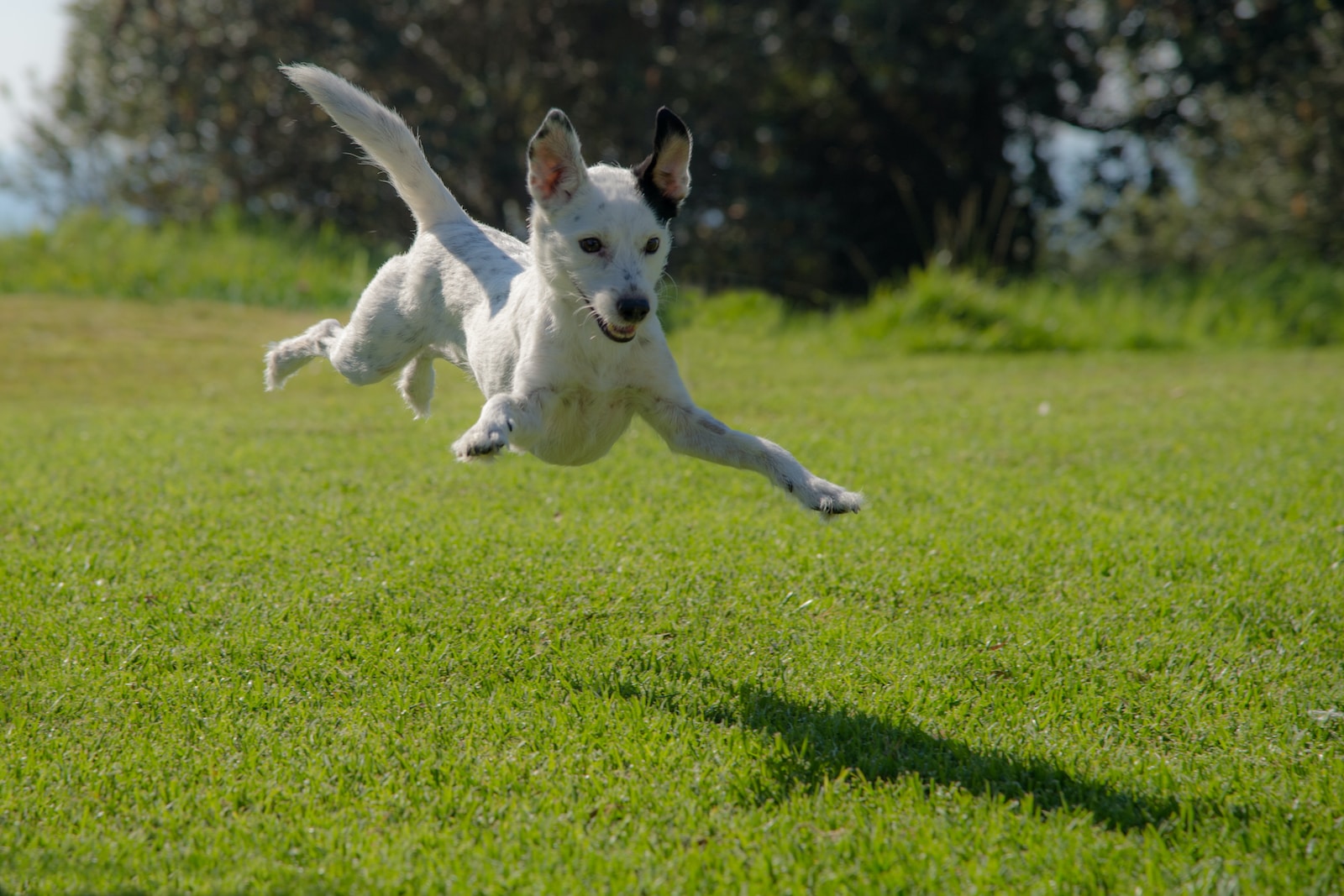The importance of regular exercise for your pet’s overall health
We all know the importance of regular exercise for ourselves, but did you know it’s just as crucial for our furry friends?
As pet owners, we have a responsibility to ensure our pets are healthy and happy, and one of the best ways to achieve this is through physical activity. From keeping their weight in check to strengthening muscles and improving mental health, there are so many reasons why regular exercise should be a priority for your pet’s overall well-being. So put on those walking shoes, grab your dog’s leash, and let’s explore the importance of incorporating exercise into your pet’s daily routine.
What is regular exercise?
Regular exercise has many benefits for both humans and pets. For humans, regular exercise can lead to better mental and physical health. It can also help reduce stress levels and improve sleep patterns. Pets benefit from regular exercise, too! In addition to being physically healthy, pets that get enough exercise are less likely to become bored and destructive, which can lead to problems such as anxiety or aggression.
Dogs who receive regular exercise tend to be less prone to heart disease, obesity, and other health problems. So whether you have a dog or a cat, making sure they get plenty of aerobic activity is an important way to keep them happy and healthy.
What types of exercise are best for pets?
There is no one right answer to this question. Just as different people prefer different types of exercise, different pets may enjoy different activities. Some dogs may adore playing fetch, while others might love going for a walk. Some cats might enjoy playing in a circular toybox, while others might simply want to sit in your lap and be petted. The best way to find out what kind of exercise your pet enjoys and needs is to give them some room to try various activities and see which ones they enjoy the most.
Why is exercise important for pets?
Physical activity is one of the most important things you can do for your pet’s overall health. It helps to maintain weight and keeps your pet physically active, which is essential for their mental health.
Pets who are inactive often become overweight and develop chronic conditions such as diabetes, heart disease, and joint pain. Exercise also strengthens their muscles and bones, which can help to prevent injuries in the future.
Exercise also reduces stress levels in pets, which can improve their mood and endurance during challenging times. When pets are content and happy, it’s easier to care for them properly and keep them safe.
How do you determine if your pet needs regular exercise?
If your pet is a dog or cat, the American Animal Hospital Association (AAHA) asserts that they should get at least one hour of physical activity each day. With some pets getting as much as two hours of physical activity per day, it’s important to figure out what type of exercise your pet needs in order to stay healthy and happy.
One way to determine if your pet needs regular exercise is by their Breed Standards from the American Kennel Club (AKC). The AKC has compiled Breed Standards for over 230 dog breeds and over 350 cat breeds. By knowing the ideal amount of physical activity for their breed, you can help create a routine for your pet that will keep them healthy and happy.
Activity level may also vary based on age. Young animals need more energy than older ones, so teaching them at an early age how much exercise they need daily is important. A young puppy or kitten should spend around 20 minutes playing outside every day, while an older animal might only need 10 minutes or less per day.
Types of exercises your pet can participate in.
Regular exercise is essential for your pet’s overall health and well-being. Pets who get enough exercise can reduce their risk of developing obesity, heart disease, arthritis, and other health problems.
Some types of exercises your pet can participate in include walking on a leash, playing fetch or romping around in a yard, playing with a toy dog or cat, and swimming. It’s important to let your pet know when it’s time to stop exercising so it doesn’t overheat or become too tired.
Things to consider before starting a routine of exercise for your pet.
If you’re considering adding regular exercise to your pet’s routine, there are a few things to consider first.
Exercise can help improve your pet’s mood, energy, and weight management. In addition, it can help prevent health conditions such as obesity and cardiovascular disease in pets.
Here are some guidelines to help you get started:
Start with short intervals of activity – A small amount of exercise is more effective than no activity at all. Try 30 seconds or less of activity for the first few weeks, then gradually increase the time as your pet becomes more accustomed to the new routine.
Play together – Having your pet join you in an active game of fetch or tug will make the experience more fun for both of you. You can also try interactive toys that require your pet to use its brain instead of just its muscles.
Monitor their progress – If your pet doesn’t seem to be experiencing any benefits from the new routine, try increasing the length or intensity of their activity until they show signs of improvement.
Tips on how to make sure your pet gets the most out of their workout.
There’s no doubt that regular exercise is important for both humans and pets. Dogs and cats need the physical activity to keep their bodies and minds healthy, and providing them with a rigorous routine can help prevent obesity and other medical issues down the road.
Ensuring that your pet receives an adequate amount of exercise is undoubtedly crucial for their overall well-being, but it can pose challenges that pet owners must navigate skillfully. The journey to keeping your furry friend active and healthy involves overcoming various obstacles, from environmental factors to time constraints.
One of the primary challenges faced by pet owners is the dynamic nature of a pet’s daily life. Many pets, especially dogs, exhibit a natural desire to explore and engage in physical activity. However, factors such as warm weather, a hot house, or living in an apartment can limit their outdoor opportunities during certain parts of the day. This poses a conundrum for pet owners who want to ensure their pets get the exercise they need while also safeguarding their comfort and well-being.
Moreover, the demands of our own human lives can present a significant hurdle. Many pet owners work full-time jobs or have busy weekend schedules, making it challenging to devote sufficient time to their pet’s exercise routine. The struggle to strike a balance between work, personal commitments, and pet care is a common experience for many.
Fortunately, there are creative and effective strategies to address these challenges and ensure your pet receives the exercise they require. Consider some of the following approaches:
- Structured Playtime: Incorporate structured play sessions into your daily routine, even if you have a busy schedule. These short bursts of active play can help your pet expend energy and stay mentally engaged.
- Dog Walkers and Pet Sitters: If your work schedule makes it difficult to exercise your pet during the day, consider hiring a dog walker or pet sitter to take them for a midday walk or play session.
- Interactive Toys: Invest in interactive toys and puzzles that engage your pet’s mind and provide physical activity. Toys that dispense treats or toys that mimic the movement of prey can be particularly stimulating.
- Indoor Exercise: Create an indoor exercise area for your pet, complete with toys and obstacles. This can be a valuable resource during inclement weather or when outdoor exercise is limited.
- Weekend Adventures: Reserve weekends for longer and more adventurous outings with your pet. Exploring hiking trails, visiting dog parks, or enjoying outdoor activities can provide ample exercise opportunities.
- Routine and Consistency: Establish a consistent exercise routine that aligns with your pet’s needs and your schedule. Consistency helps your pet anticipate and look forward to their active time.
- Consult with a Professional: If you’re unsure about your pet’s exercise requirements or if they have specific health considerations, consult with a veterinarian or animal behaviorist for guidance.
While the challenges of ensuring your pet gets enough exercise are real and multifaceted, there are practical solutions available. By combining creativity, planning, and a commitment to your pet’s well-being, you can conquer these obstacles and provide your furry companion with the physical activity and mental stimulation they need to live a happy and healthy life. Remember, your efforts are not only a reflection of your love for your pet but also a vital component of their overall health and happiness.
There are some tips you can follow to make sure your pet gets the most out of their workout:
1) Set realistic goals. Make sure you’re not expecting your pet to do too much too soon – start by scheduling short bursts of activity instead of hours-long walk/jog sessions. gradually increase the amount of time your pet spends engaged in physical activity over time as they become more accustomed to it.
2) Get creative. If running isn’t an option, think about ways you can get your pet moving: set up a play toy area near where they live so they have something to scratch and play with; get rid of areas of furniture that are off-limits (a dog might not know if he should stop jumping on the couch because it’s not his territory); create a “petiole” in your garden where dogs can hang out (portable fences are ideal for this); or make use of automated pet exercise programs.
3) Reward good behavior. Whether it’s taking a break after playing hard for a half an hour or following through with a requested walk/jog, rewarding your pet for good behavior can help encourage them to keep up the good work.
Conclusion
According to many pet experts, exercise is key for both your pet’s physical and psychological health. Not only does regular exercise provide your furry friend with a dose of aerobic activity, but it also helps them stay mentally alert and stimulated.
Additionally, engaging in regular exercise can prevent overweight pets from developing prediabetic diseases or heart conditions in the future. So whether you are looking to keep your pooch fit and healthy or screen out potential problems before they become big issues, make sure you’re providing enough physical activity.







